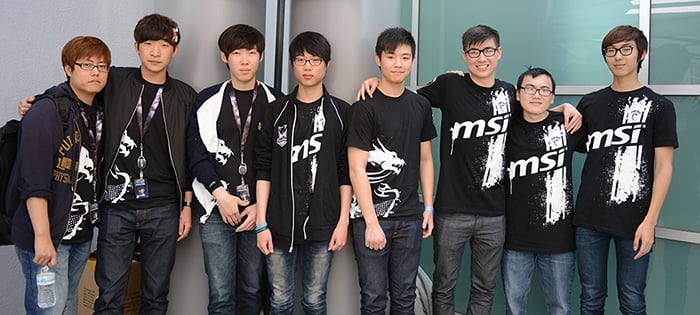
Introduction
When Riot introduced auto-promotion and auto-relegation at the end of last season, fans rightfully applauded. In the case of Europe’s Ninjas in Pyjamas or H2k, talented players were kept out of the LCS because they didn’t have the mental fortitude or experience to play out difficult Bo5 sets – traits which would only come after LCS-level practice. Not only would auto-promotion help talented players automatically secure spots in the league, but it would also motivate bottom-tier teams to keep playing hard. Riot hoped that this auto-relegation policy would lead to a dogfight as teams fought to avoid relegation. This would make the bottom of the standings just as exciting as matchups between top teams.
Overall, these policies are well-intentioned, and have come with an overall plan from Riot to help inexperienced players get into the LCS so they can focus on improving. Another example of this comes in the form of Season 5’s LCS expansion to include ten teams instead of just eight. These policies have helped the LCS get stronger. Gravity and H2k are two of the strongest sides in their regions right now, and both teams qualified through the promotion tournament. Auto-promotion gave Team Enemy a chance to test themselves in the LCS, and although the results have been mixed, they have some talented and improving players. (Auto-promotion has been somewhat less helpful in Europe, because Origen was probably a lock to qualify for the LCS anyways.) When Riot helps inexperienced teams qualify for the league, good things have happened.
However, auto-promotion should not come with auto-relegation. On one level, it’s true that a split’s worth of poor performance should be enough to indicate that a team is not LCS worthy. However, history has shown that teams simply need a longer time to improve their performance. Giants came one game from being auto-relegated last season, but with only one roster move they have become playoffs contenders in Europe! In addition, we’ve seen in just two splits the unfortunate side of removing a team from the LCS without giving them a chance to defend their spot.
The Issues of Auto-Relegation
We’ve already seen auto-relegation have an unfortunate effect in just two splits. Because Coast was auto-relegated so early in the season, the policy caused the team to completely give up on their LCS spot and immediately try to re-qualify by moving their players onto a Challenger team. Over in Europe, MYM and Giants were tied at the end of the season, meaning that a Bo1 tie-breaker decided which team would keep their LCS spot. At the end, it was a late Baron throw which decided which team got to stay in the LCS, and although fans rightfully despised the MYM organization, the team had talented players like Kori and H0R0. Europe’s problems with auto-relegation would continue in the next split, as SK and Copenhagen Wolves both attempted to make drastic personnel moves to try and escape the guillotine of auto-relegation. Fans have suggested that Copenhagen Wolves brought in the inexperienced Lenny and je suis kaas to try and save money for their re-qualification bid.
However, the most example of auto-relegation’s problems come in Team Dragon Knights. In the NA LCS this season, Team Dragon Knights were unable to put together their full roster until half the split had ended. In Team Dragon Knights, Riot’s auto-relegation policy faces a serious problem. Auto-promotion is designed to help inexperienced but talented teams get a chance at the LCS. The Dragon Knights are a talented but inexperienced team, yet they are actually getting removed from the league with only a handful of games under their belt.
In these examples, we can see that the results of auto-relegation have run counter to the its own goals as well as the goals of auto-promotion. Auto-relegation was designed to keep teams fighting until the end of the season. Auto-promotion was intended to help young and talented players get into the league. In general, these goals have not been met. Team Coast and the Copenhagen Wolves punted their seasons under the guillotine of auto-relegation by stocking their rosters with unproven Challenger players. Outside of the Wolves’ inspiring Week 9 win on the back of Freeze’s Caitlyn, fans were treated to poor games and almost guaranteed losses from both teams. In the case of MYM vs. Giants, the end-of-season competition became too drastic. There’s a reason why Bo5 is used to decide LCS spots – the randomness in a Best of 1 is simply too great for it to determine the next 3-6 months of a player’s career.
In addition, almost all the teams threatened by auto-relegation have had talented LCS-caliber star players. In fact, it should be expected that inexperienced teams get relegated because they only have a split’s worth of experience, meaning that auto-relegation oftentimes directly counters the benefits of auto-promotion, as mentioned earlier in the case of Team Dragon Knights.
How can we keep auto-promotion without auto-relegation?
The LPL currently has a system where the top two LSPL teams join the league while the bottom four LPL teams (9-12) play a seeded bracket with the LSPL teams that finished 3rd to 6th for the remaining two spots. This system ensures that talented Challenger teams (the LSPL isn’t exactly a Challenger league in China, it’s more like a secondary league, but if this system was ported to the LCS, the Challenger scene would take the place of the LSPL) get a chance at the major leagues while also ensuring that only the best teams get to re-enter the LCS.
The two teams that qualified through this format, Unlimited Potential and Qiao Gu, are both looking like outside contenders for one of China’s World Championship berths. At the same time, the teams that had to fall into the promotion tournament kept playing hard until the end of the season for seeding purposes.
This system would work very well if it was ported into the LCS. However, one factor which Riot wants to promote is the concept of teams challenging other teams to defend their LCS spots (much like a title bout in sports like competitive boxing.) This concept can often create some exciting storylines, so it may be worth keeping. In this case, it’s possible to alter the system to include this idea. For instance, the league could auto-promote a team based on their regular season standing (with a Bo5 tie-breaker in case of ties.) Then, the bottom LCS team drops into a tournament with the rest of the Challenger teams, and the best performers in that tournament get accepted into promotion.
Conclusion
Auto-relegation runs directly counter to the goals of auto-promotion. While auto-promotion is a great idea, it’s possible to keep it without guaranteeing relegation for another team. To help develop new players and improve talent, the LCS should explore ways to keep auto-promotion without its counterpart.
Photo credits to legendsbr.com





